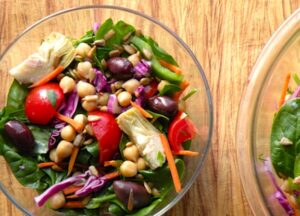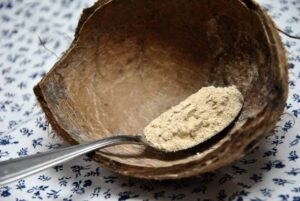If you’re looking for a great new addition to your gluten-free pantry, consider almond flour. Unlike other gluten-free flours, especially rice flour, which is often characterized as gritty or grainy, almond flour has a smooth mouthfeel and a rich, buttery taste. Start with these tips, excerpted and adapted from Almond Flour: The High Protein, Gluten-Free Choice for Baking and Cooking by Beverly Lynn Bennett, (© 2016 Book Publishing Company, reprinted by permission) will get you started.
Because it’s made from nothing but ground nuts, almond flour can be eaten raw and tastes quite good. In addition, the light and airy consistency and uniform texture of blanched almond flour allows it to evenly absorb liquids. That’s why you’ll have the best results using blanched almond flour rather than natural almond flour or almond meal in baked goods, such as biscuits, breads, cakes, cupcakes, muffins, pastries, pie crusts, scones, and other similar types of recipes.
When they first come out of the oven, baked goods made with almond flour tend to be extremely soft and delicate. To avoid having them break or crumble, let them cool in the baking pan or on the baking sheet for ten to thirty minutes before transferring them to a rack to cool completely.
Due to the high fat content of almond flour, the texture of baked goods made with only almond flour is generally more tender and cake-like rather than crispy or crunchy. However, you still can enjoy crisp cookies and crunchy breaded tofu and vegetables simply by using almond flour in combination with other gluten-free flours or starches.
Besides being a better option for baked goods, blanched almond flour can be used in stove-top recipes, such as French toast, pancakes, and waffles. Moreover, much like wheat flour, almond flour has great binding properties, whereas other gluten-free flours typically require a mix of gluten-free flours or starches to achieve similar results.
Almond flour is also an excellent replacement for bread crumbs in breading mixtures, toppings, veggie burgers, and other savory recipes.
Use prepackaged blanched almond flour for best results.* All the recipes in this book were developed and tested using it, which yield the best results. But if you want to experiment, you can make your own almond flour simply by processing small amounts of blanched almonds in a high-speed blender, food processor, or coffee grinder, stopping occasionally to scrape down the container. Be careful that you don’t process the almonds too long, or you’ll end up with almond butter rather than flour. After grinding the almonds, sift the flour to ensure it has a consistently fine, powdery texture, and store it in an airtight container in the refrigerator.
*Bob's Red Mill is one such brand.
-
*This post contains affiliate links. If the product is purchased by linking through this review, VegKitchen receives a modest commission, which helps maintain our site and helps it to continue growing!
Find a wealth of tips on our Healthy Vegan Kitchen page.






Jan Potter says
If I want to use almond flower instead of regular flour, do I use the same amount?
Nava says
Jan, here's a good article on conversion and usage tips: https://www.natureseats.com/blog/recipe-blog/item/almond-flour-flour-conversion
Helen says
I'm excited using almond flour as a substitute for flour mainly for my husband who has found out that he has diabetes and is unable to have carbs